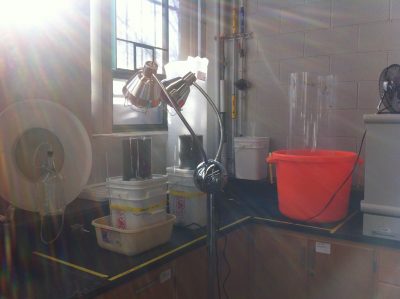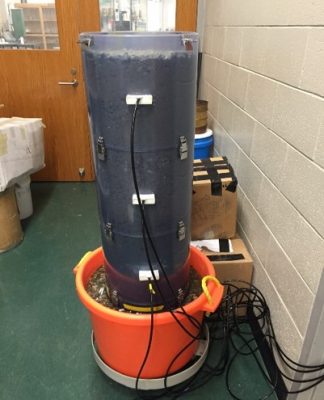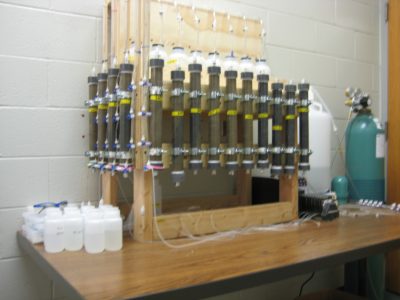- Homepage
- >
- Laboratory services
Laboratory services
The Geoenvironmental Engineering Laboratory offers a variety of testing services (contact Dr. Chrysochoou for pricing and details)
- Portable X-ray Fluorescence (XRF) analysis of solid samples: an Olympus Vanta spectrometer offers the capability to test the elemental concentration of solid samples for up to 38 elements simultaneously, from Magnesium (Z=12) to U (Z=92), in concentration ranges to a few ppm (soils) up to wt% (alloys, aggregates and others). The portability of the instrument allows field use for screening of heavy metals and QA/QC of construction and other materials.
- Characterization of soils, waste and other contaminated media, aggregates, industrial by-products etc.: we utilize a combination of techniques such as X-ray Diffraction (XRD), Scanning Electron Microscopy (SEM) and bulk chemical analysis (XRF or wet chemistry) to determine the nature of unknown materials and determine composition and potential sources. These services are offered in collaboration with the Institute for Materials Science (http://ims.uconn.edu) that houses the XRD and SEM equipment. A short description of XRD and SEM methods are provided in Method_Description
- Lab-scale treatability studies for hazardous waste and contaminated soils (in situ chemical reduction, in situ chemical oxidation, stabilization/solidification)
- Characterization of leaching properties for hazardous waste and soils: TCLP, SPLP, EPA LEAF protocol, column studies. Note that we are NOT a certified lab; such studies are typically offered for screening purposes or for in depth understanding of contaminant behavior
- Geotechnical soil characterization: grain size distribution, hydrometer testing, Atterberg limits, USCS classification, specific gravity, compaction, hydraulic conductivity, consolidation, unconfined compressive strength, direct shear test
We have worked with a variety of industrial sponsors and are able to custom-design and build experimental setups, such as the capillary rise testing columns shown in the figure. Tell us your needs and we will help you determine the best experimental approach.

Unsaturated columns with infrared lamp simulating the influence of heat on capillary rise

Unsaturated columns to monitor capillary rise with non-destructive water content and conductivity sensors

In situ XRF measurement of Titanium content in paint

Multi-column channel setup with controlled inflow and outflow for treatability studies